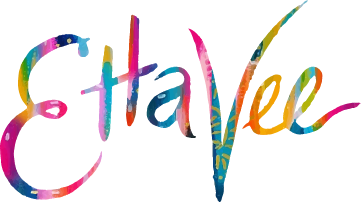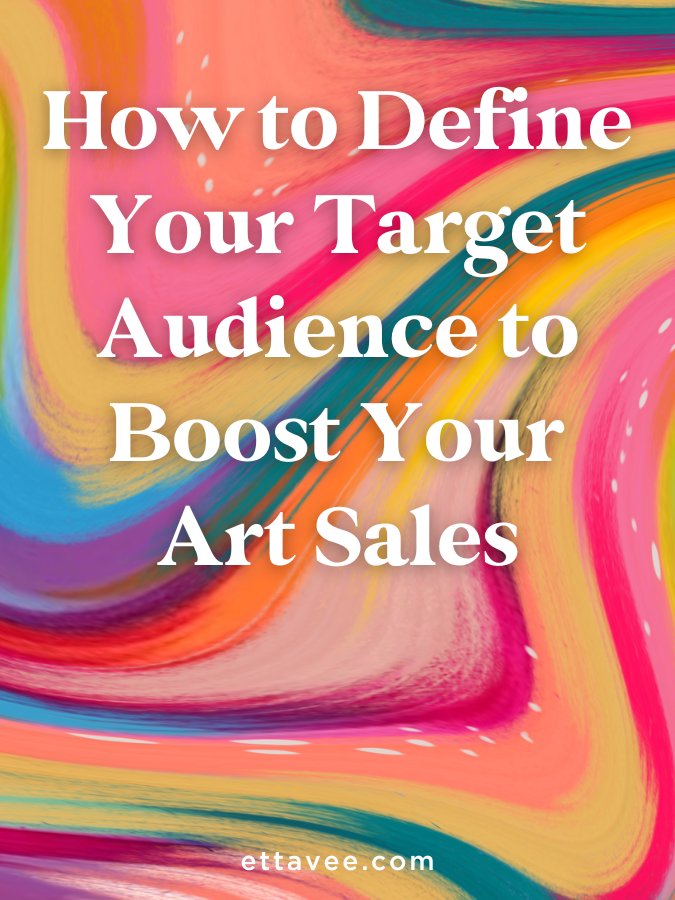How to Define Your Target Audience to Boost Your Art Sales
In this post, I want to share some steps you can take to define your target audience as an artist. Defining your ideal audience or customer is so crucial for success as an artist. I struggled with this when I was first starting out, but once I defined my audience my art career really started to take off.
Back in the winter of 2016, I was participating in my second Etsy holiday pop-up market in Paris. When I wasn’t working at my full-time job, I spent many nights and weekends preparing for the show.
Though I had a lot of fun at the pop-up, I didn’t make many sales and felt rather down on myself. Watching so many other artists & makers making sales left and right all around me was tough. I started to question if what I was doing was worth continuing. Deep down, I knew there was value in my art, but how could I get others to see it as well?
Though I was feeling blue, I knew that I needed to take a critical eye to elevate my work as well as assess who my dream customers were. I knew that my people were out there and I just had to find them - and that’s exactly what I did! One thing that really helped me was realizing that my buyers tend to live in parts of the world that embrace color more willingly than buyers in France.
This not only helped me find the people who would be willing to buy my art, but it also helped me view my brand from an international lens. Without thinking bigger about my audience, I might still be doing pop-up markets in France instead of licensing my artwork to international brands and selling it to fine art collectors around the world!
Here’s a fun throwback picture of me at that market! Defining my audience and thinking bigger has been a huge part of my growth journey since then, and I’m so grateful!
So how do you go about defining your target audience?
Here are a few steps you can take to get clear on who you’re selling to in an effort to increase your sales and find the people who will resonate with your art!
Get clear on your niche & style
Before you can define who your art is for, you need to define your niche and style. This doesn’t have to be super specific, but your work should all fit as part of a cohesive theme. So for example, even though I use different media, different color palettes, and different motifs and designs, my work can broadly be defined as falling under the category of bright, joyful abstract art.
Ask specific questions to define your audience
When thinking about an ideal customer, I like to actually picture them in my head and create what is called a “client avatar” or a human representation of your audience. This helps to think through who your audience members are as people so you can better understand them and serve them.
To build this client avatar, ask specific questions to discover who they are and what their motivation for purchasing your art is. Here is a list of questions to go through as you’re defining your target audience as an artist:
Are you planning to sell to a local audience or sell online?
Where is your ideal audience located?
What is their age?
What do they do for work?
What kind of home do they live in? (This can be hugely helpful in defining what kinds of products you sell! For example, if your ideal audience is in their early 20’s living in an apartment, maybe you focus mostly on selling prints. If your ideal client is in their 40s living in a large home, you could focus more on large-scale fine art!)
What are their interests?
What do they type into Google when looking for art?
Where do they spend their time online? Instagram? Pinterest? How can you show up in their favorite online hangout?
What is their buying behavior like? Are they impulse buyers? Or do they take time to think about a purchase? Do they have lots of disposable income, or do they save up for items they want to buy?
What is the benefit to them when they purchase your art?
You may be thinking, “Jessi, I don’t know the answers to any of this! No one has bought anything from me yet!” And that’s ok! The fun part is that you get to make up this information if you don’t know. Visualize a scenario in your mind of you selling your art. Imagine someone coming across your work and wanting to purchase from you. Then start to answer these questions with that person in mind. Vividly create an image of them as a person. I promise that ideas will start to flow once you get started!
And if you’re feeling stuck, start with yourself. Chances are when you think of your ideal collector or art audience member, they probably have some things in common with you. Use yourself and your interests as a jumping-off point to define who might be interested in purchasing your art.
The benefits of narrowing down your audience
Defining your audience doesn’t mean that the only people who will buy from you have to fit this description exactly. It just gives you a narrow target so that you can get clear on how best to market and sell your work.
There’s a quote out there that says, “If you sell to everyone, you’re selling to no one.” It can be tempting when defining your audience to want to make it very broad. You may be thinking that you don’t want to miss out on potential buyers by excluding them from your target audience.
But in reality, if you try to sell to all of those people your message will be more watered down since you are catering to so many people. Whereas if you focus on a specific target audience, you’ll be able to market specifically to them. They’ll feel seen and heard and you’ll build stronger trust with them as a result.
I hope that this has given you some inspiration for defining your audience! I know that this can feel intimidating, but it’s so worth it in the long run. And don’t forget, that you don’t have to stick with this definition of your audience forever. As you grow and evolve and your art shifts, you may find that your audience shifts as well. And that’s perfectly fine! We are meant to grow and change, so don’t ever feel afraid to try new things and shake it up as time goes on!
Pin this post for later! 📌
Hover or tap on this image and click the “Save” button on the top left!



